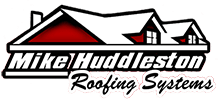Taking care of your roof is crucial for keeping your home safe and secure. Preventative maintenance helps extend the life of your roof and saves money on costly repairs. Simple, regular upkeep ensures that your roof remains in good condition throughout the year.
Regular Roof Inspections
Regular roof inspections are essential for maintaining the health of your roof. By checking your roof at least twice a year, you can identify potential problems and address them before they escalate. Here are some key areas to focus on during your inspections:
1. Check Shingles: Look for missing, loose, or damaged shingles. Cracked or curled shingles can lead to leaks and other damage. Replace any faulty shingles immediately.
2. Examine Flashing: Flashing is found around chimneys, vents, and skylights. Ensure it is intact and securely fastened. Damaged or missing flashing can allow water to seep in and cause leaks.
3. Inspect Seals and Caulking: Check the seals and caulking around your roof. Make sure there are no gaps or cracks. Gaps can let in water and result in damage over time.
4. Look for Signs of Wear: Note any areas of the roof that appear worn or weathered. Pay close attention to valleys and areas where two sections of the roof meet, as these are common problem areas.
By performing regular inspections, you can maintain the integrity of your roof and catch small issues before they turn into major problems.
Cleaning and Maintaining Gutters
Cleaning and maintaining gutters is important for protecting your roof and home from water damage. Gutters direct rainwater away from your roof and house, preventing leaks and structural damage. Follow these steps to keep your gutters in good condition:
1. Remove Debris: Clear leaves, twigs, and other debris from your gutters. Clogged gutters can cause water to back up and overflow, leading to roof and siding damage. Clean gutters at least twice a year, especially in the fall and spring.
2. Check for Leaks: Inspect your gutters for any leaks or holes. Use a hose to run water through the gutters and watch for any leaks. Seal small holes with gutter sealant and repair larger damages if necessary.
3. Ensure Proper Drainage: Make sure downspouts are clear and directing water away from your home’s foundation. Check that the water flows freely and doesn’t pool around the base of your house.
4. Inspect Gutter Attachments: Ensure gutters are securely fastened to your home. Loose gutters can sag and cause improper drainage. Tighten any loose attachments and replace damaged sections.
Regularly cleaning and maintaining your gutters will help protect your roof and home from water damage, ensuring that both remain in good condition for years to come.
Addressing Roof Leaks Immediately
Roof leaks can cause serious damage if not addressed promptly. Even small leaks can lead to mold, rotting wood, and structural issues. Here are steps to take when you discover a leak:
1. Locate the Source: Find the origin of the leak by inspecting your attic and roof. Look for water stains, mold, or dripping water. Identifying the source helps you understand the extent of the damage.
2. Contain the Leak: Use a bucket to catch dripping water and minimize damage inside your home. Protect your belongings by moving them away from the leak area.
3. Temporary Fix: Apply a temporary patch to the leak using roofing tape or sealant. This can help prevent further water entry until you can make a permanent repair.
4. Permanent Repair: Replace damaged shingles, reapply flashing, or seal around vents and chimneys as needed. Making thorough repairs ensures the leak doesn’t return.
5. Inspect for Further Damage: Check surrounding areas for additional damage caused by the leak. Address any other issues to prevent future problems.
By addressing roof leaks immediately, you can protect your home from extensive damage and costly repairs. Quick action keeps your roof and home safe and secure.
Protecting Your Roof from Tree Damage
Trees can enhance your property, but they also pose risks to your roof. Falling branches and overgrown limbs can cause significant damage. Taking steps to protect your roof from tree damage is important:
1. Trim Overhanging Branches: Regularly trim branches that hang over your roof. Overhanging branches can break during storms and damage your roof. Keeping them trimmed reduces this risk.
2. Remove Dead or Dying Trees: Dead or weakened trees are more likely to fall during storms. Remove these trees to prevent them from causing damage to your roof.
3. Watch for Falling Leaves and Debris: Accumulation of leaves and twigs on your roof can trap moisture and lead to mold growth. Regularly clean off debris to keep your roof in good condition.
4. Monitor Tree Health: Healthy trees are less likely to drop branches. Keep an eye on the health of your trees and address issues like disease or pests promptly.
5. Install Protective Measures: Consider installing protective screens or barriers to prevent large branches from hitting your roof.
By taking these steps, you can help protect your roof from potential damage caused by trees. Preventative measures ensure your roof remains strong and resilient.
Conclusion
Regular maintenance is crucial for extending the life of your roof and protecting your home. By performing routine inspections, cleaning gutters, addressing leaks quickly, and safeguarding against tree damage, you can keep your roof in excellent condition. These efforts prevent minor issues from becoming major problems, saving you time and money.
A well-maintained roof provides peace of mind, knowing your home is protected from the elements. It is essential to stay proactive with roof care to avoid costly repairs and ensure the safety of your home.
For professional assistance with maintaining your roof, contact Mike Huddleston Roofing Systems. Our expert team is equipped to handle all your roofing needs. Contact us today to schedule a residential roof repair and more to keep your roof in top shape year-round.

